Recent Articles
Popular Makes
Body Types
10 Reasons the Ford F-150 Is Superior for Towing
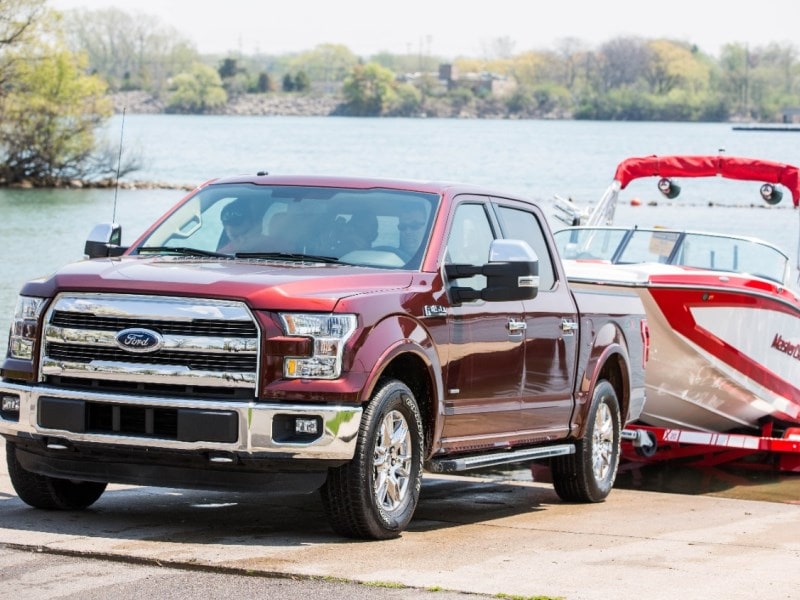
While the overall demands placed upon pickup trucks have changed somewhat over the years, one thing pickup trucks always have to be good at is towing. For the contemporary version of America’s best-selling automobile, the engineers at Ford have come up with so many innovations, it’s hard to pick only10 reasons the Ford F-150 is superior for towing. Leveraging the latest in electronic driver’s aids, and pairing them with an extraordinarily strong body structure, as well as powerful engines and robust drivelines, they have endowed the cutting edge new 2016 Ford F-150 with the capability to tow up to 12,200 pounds (when fitted with the proper towing kit). Because of this, the 2016 Ford F-150 has the highest towing rating in its class. Further, the pickup accomplishes this remarkable tow rating with an economical V6 engine, as opposed to the thirsty V8s some of its competitors require to achieve their maximum towing capacity.
Lightweight Body Structure
One of the ten reasons the Ford F-150 is superior for towing is the lightweight aluminum in its hood, various body panels, and its cargo bed. This makes it approximately 700 pounds lighter than its predecessor. Far from flimsy, the 2016 F-150 is constructed with military grade aluminum in a variety of thicknesses. Exceptionally strong, the material is stronger than steel, yet considerably lighter. While taking advantage of the advanced material in its superstructure, the Ford F-150 has a ladder frame composed of a great deal more high-strength steel than previous versions of the truck. So, while the F-150 is lighter, it’s also stronger where it counts the most. Less weight in a stronger body structure means more of the power generated by the engines can be used for tasks like towing. In fact, the 2016 Ford F-150 will tow up to 1100 pounds more than the previous all-steel model.
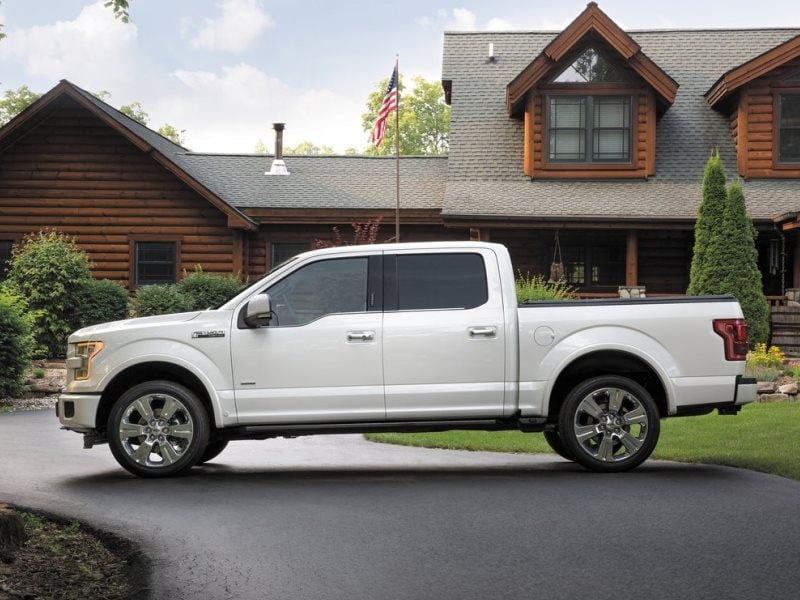
Turbocharged V6 Engines
While the Ford’s competition still relies primarily upon V8 power for its full-size pickups, the F-150 offers a choice of two turbocharged V6 engines, each of which produces power far in excess of their cylinder count and displacement. The 2016 F-150’s 2.7-liter turbocharged V6 makes 325 horsepower and 375 ft-lbs of torque. This is well into what is traditionally considered V8 territory. Under normal circumstances, the engine is also capable of returning an average of 22 miles per gallon with rear drive and 20 mpg with four-wheel drive. Or, it will tow up to 8,500 pounds. The F-150’s “big” V6 displaces 3.5-liters and uses turbocharging to generate 365 horsepower and 420 ft-lbs of torque. With rear-drive this engine can carry the F-150 an average of 20 miles for every gallon consumed—19 with four-wheel drive. This engine also enables the F-150 to achieve its maximum tow rating of 12,200 pounds.
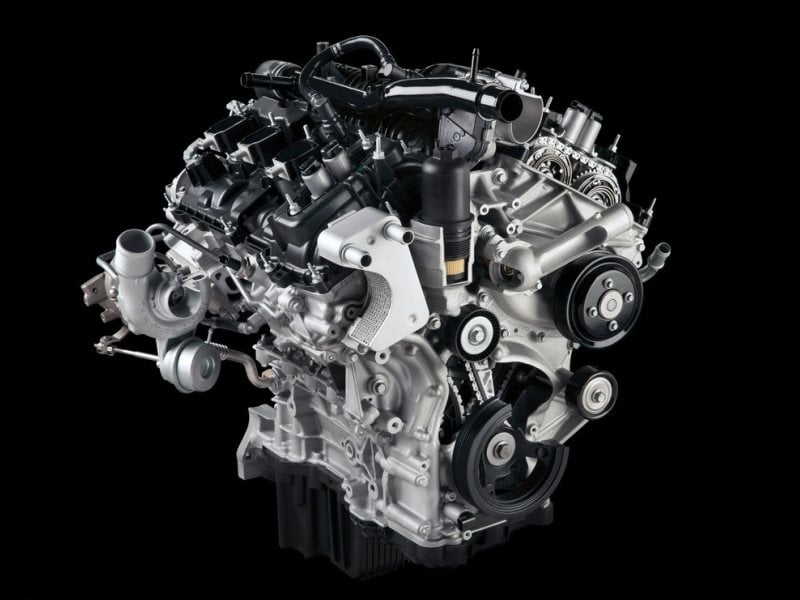
Tow/Haul Transmission Mode
Another of the ten reasons the 2016 F-150 is superior for towing is the Tow/Haul Mode of its six-speed automatic transmission. A standard feature, whether you opt for four-wheel drive or rear-wheel drive, the Tow/Haul Mode enhances the towing capabilities of the 2016 Ford F-150 significantly. When it is engaged, the Tow/Haul Mode prevents “gear hunting”, automatically downshifts to achieve engine braking, and relieves the strain placed upon the braking system and torque converter, thus increasing the longevity of both of these vital components. The Tow/Haul mode raises the transmission’s shift points so it will allow the engine to rev higher before effecting a gear change. This reduces shifting frequency and allows the use of overdrive to reduce fuel consumption—while eliminating the possibility of lugging the engine. The Tow/Haul mode also downshifts the transmission automatically to generate engine braking on downgrades and when coming to a stop.
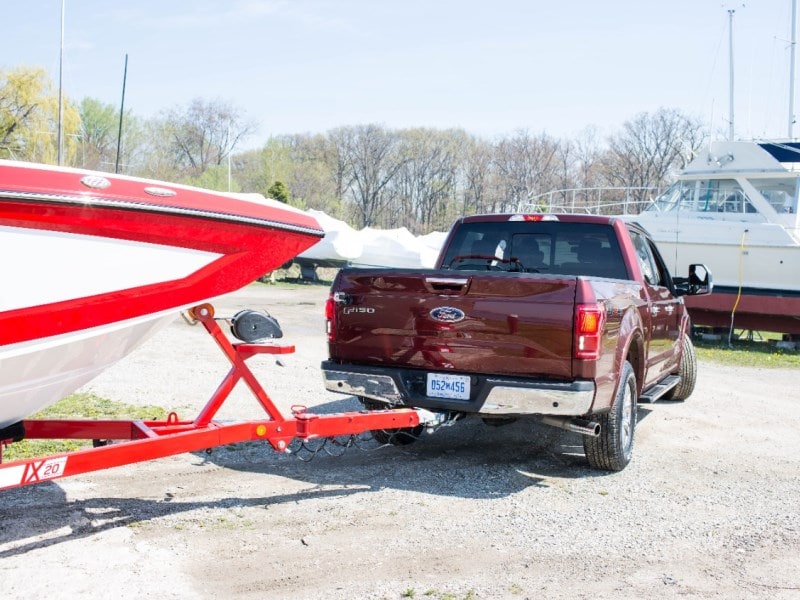
Trailer Sway Control
Every F-150 is fitted with trailer sway control, a technology Ford pioneered years ago to ensure trailers follow the F-150 obediently. The system works in conjunction with the F-150’s stability control system. If you’re towing and the trailer starts to sway, the stability control light in the instrument panel illuminates to let you know the system is sensing an issue. You’ll also get a trailer sway reduce speed message in the information display. The system then applies each of the F-150’s brakes individually (as needed) to help stabilize the trailer. It will also reduce engine output if required to slow the pickup truck sufficiently to help the trailer regain stability. This generally happens if you’re trying to drive too fast with the trailer attached, or if the load is distributed improperly, or if your trailer connection is less than optimal.
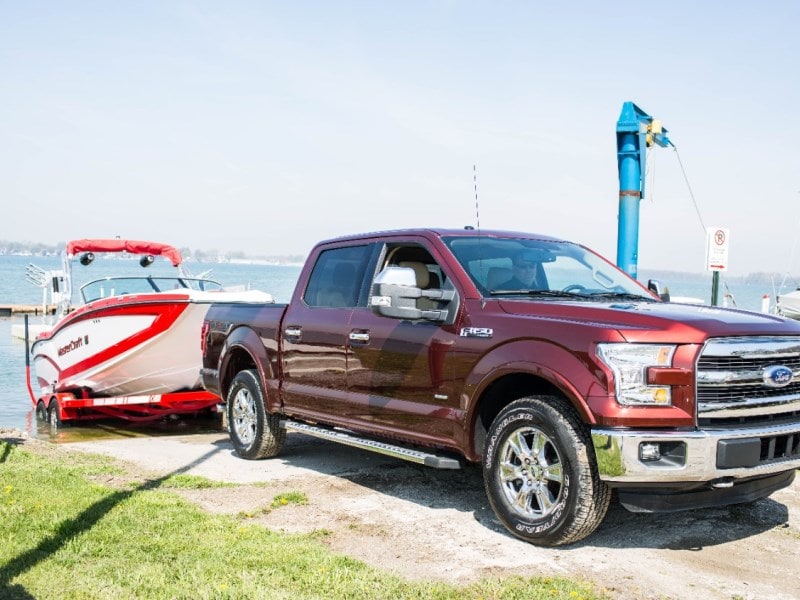
Integrated Trailer Brake Controller
With the 2016 Ford F-150’s Trailer Brake Controller, drivers are freed from the concerns of modulating braking to ensure stopping power is distributed evenly between the truck and the trailer. This system automatically applies the trailer’s brakes when the F-150’s brakes are activated. The F-150’s Integrated Trailer Brake Controller also allows you to pre-determine how much or how little braking power to apportion to the trailer’s brakes. This allows you to pre-set the system based upon expected conditions and terrain. You can also adjust it as you go—should you run into unforeseen circumstances. A readout in the dash enables you to monitor the trailer brake setting. Further, The trailer display in the dash also allows you to monitor other functions of the trailering system as you go.
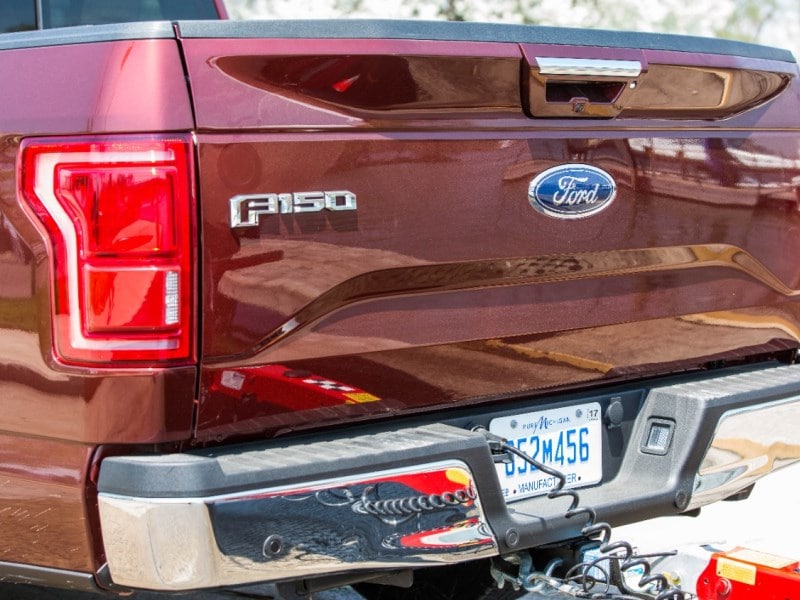
Smart Trailer Tow Connector/Productivity Screen
Also among the ten reasons the Ford F-150 is superior for towing, the Ford’s Smart Trailer Towing Connector monitors every aspect of the trailering system to keep you abreast of connectivity issues, as well as the trailer battery’s condition and lighting system issues. It will tell you if the brake lights are functioning properly, in addition to trailer marker lamps. The system keeps you informed via the eight-inch productivity screen in the main instrument panel between the speedometer and the tachometer. The 2016 Ford F150’s productivity screen also offers other useful towing related information such as trailer brake controller settings, vehicle pitch, and steering angle. The towing section of the Ford’s productivity screen will also serve data from stored profiles for up to 10 different trailers, including the accumulated mileage for each rig. The productivity screen will also walk you through the connection process to help you make sure all required connections are made and secure.
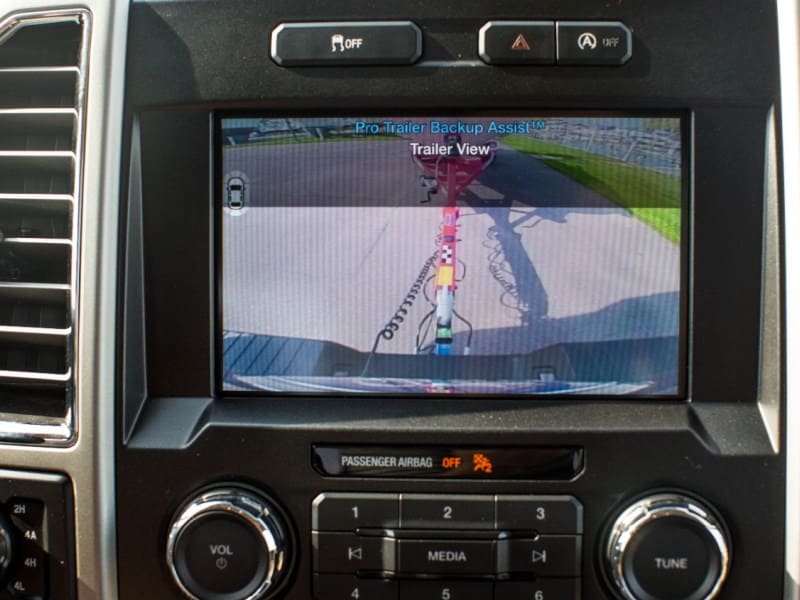
Pro Trailer Backup System
The 2016 Ford F-150’s Pro Trailer Backup Assist is yet another of the 10 reasons the Ford F-150 is superior for towing. Leveraging much of the same technology Ford uses in its automated parking systems, Pro Trailer Backup Assist makes it easier for drivers of all skill levels to back a trailer up to launch a boat, park in a driveway, or maneuver in tight spaces. This is a segment-first technology, currently offered only on the 2016 Ford F150. Pro Trailer backup Assist allows customers to steer a trailer instinctively by turning a knob left or right to indicate direction; while the truck controls its own steering and limits its speed. This frees the driver up to focus on precisely what the trailer is doing, while enabling them to completely trust the truck will go where they need it to go to help them place the trailer with more confidence.
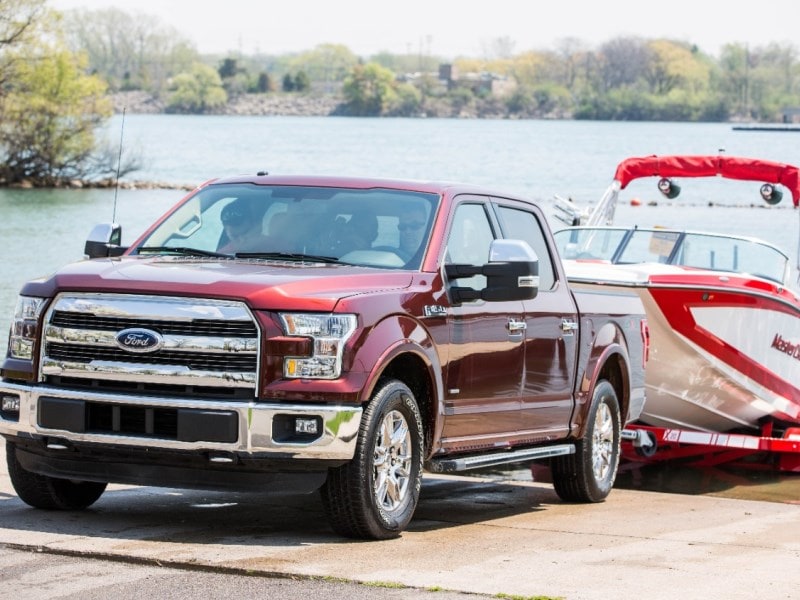
Dynamic Hitch Assist
Leveraging the 2016 Ford F-150’s rear view camera system, Dynamic Hitch Assist helps you line up the center of the truck with a trailer while you’re at the F-150’s steering wheel—without an outside spotter guiding you. The touchscreen monitor in the dash displays the standard reversing guidelines; in addition, black lines on the screen indicate the position of truck’s trailer hitch receiver in relation to the tongue of the trailer. Because you can see the exact position of both, you can line up the truck’s hitch to a trailer all on your own—without getting out of the truck. It also offers a zoom button to provide a closer look, enabling you to determine the connection is made with certainty.
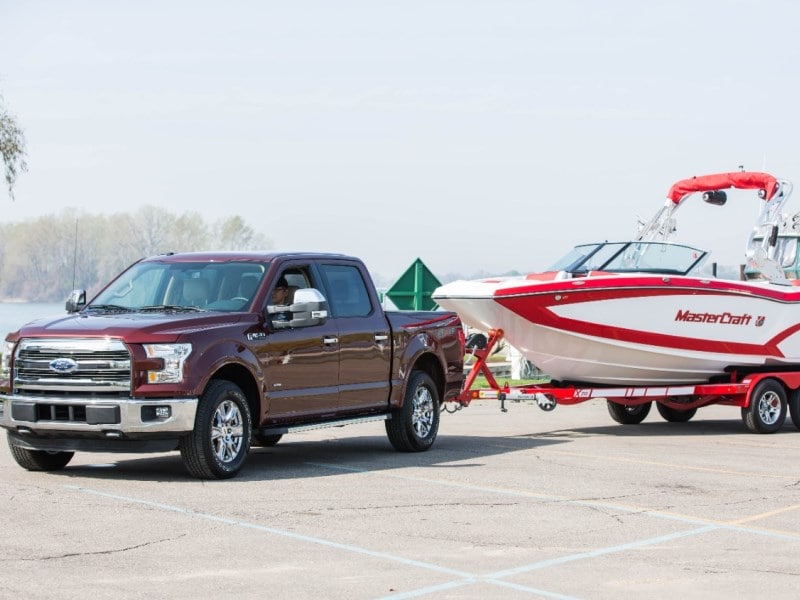
Max Trailer Towing Package
Another of the ten reasons the Ford F-150 is superior for towing is the model’s comprehensive Max Trailer Towing Package. With it, you get all the major elements you need to turn your 2016 Ford F-150 into a hardcore towing machine. The package includes a four-pin/seven-pin wiring harness; a Class IV trailer hitch receiver; Ford’s Smart Trailer Tow Connector; an auxiliary transmission oil cooler; a 3.55 electronic-locking rear axle; the trailer brake controller; an upgraded front stabilizer bar, and an upgraded rear bumper.
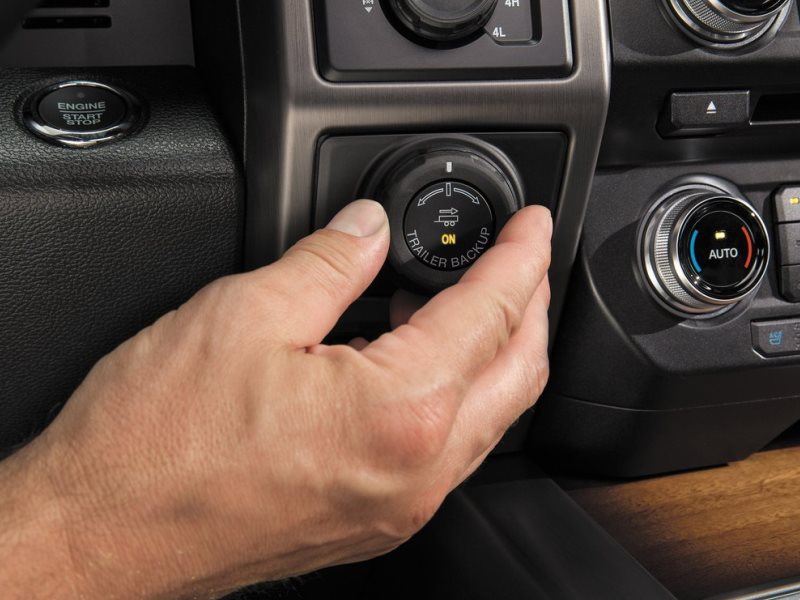
Ford’s History Of Trailering Innovations
In 2005, Ford introduced the trailer brake controller as a segment first development. In fact, the manufacturer was the first to offer an integrated factory-installed trailer brake controller system. In 2009, the company did it again with the trailer sway control system. For 2015, Ford debuted the segment’s first smart trailer control module, as well as the F-150’s class-exclusive dynamic hitch assist. The Pro Trailer Backup Assist, offered with the 2016 models, is a segment first and class-exclusive offering. Further, the 2016 Ford F-150 currently offers the best in class light duty pickup truck tow rating, at 12,200 pounds. And those are among the 10 reasons the Ford F-150 is superior for towing.
